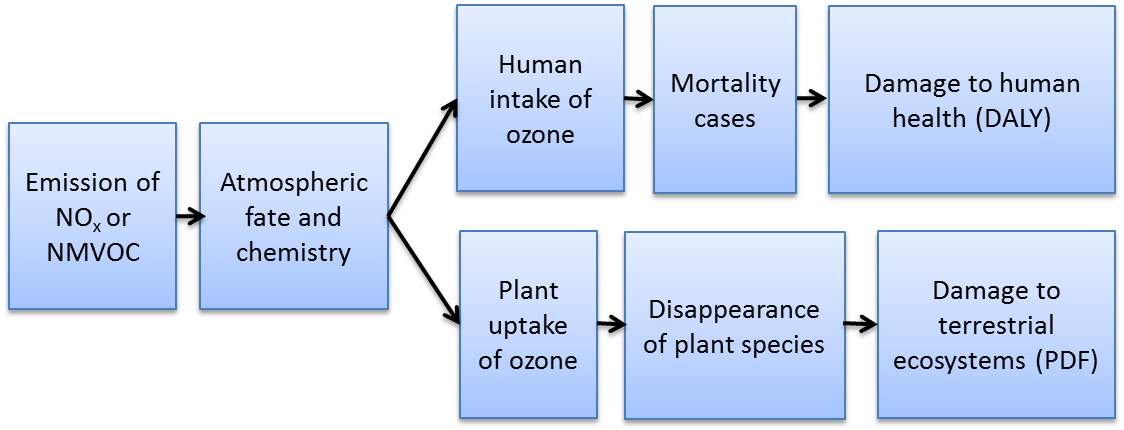Air pollution causing tropospheric ozone in the atmosphere can have a negative impact on human health, e.g. respiratory problems, and terrestrial ecosystems, e.g. plant biomass decrease.
Cause-effect pathway
The impact model is addressing emissions of nitrogen oxides (NOx), and non-methane volatile organic compounds (NMVOC) and consequent effects on the Areas of protection ‘Human Health’ and ‘Terrestrial ecosystems’. This overview will focus on the effects on ecosystems quality only.

Modeling approach
A marginal approach for calculating the characterization factors is followed, meaning that the additional impact of a marginal increase in ozone precursor emission using today’s situation as the reference state was determined. Model results were determined following a change in anthropogenic emissions and is determined by lowering the year 2000 emissions by 20% for each of the 56 source regions. Impact is measured in disability adjusted life years for human health (DALYs) for human health and potentially disappeared fraction of species over time for terrestrial ecosystems.

